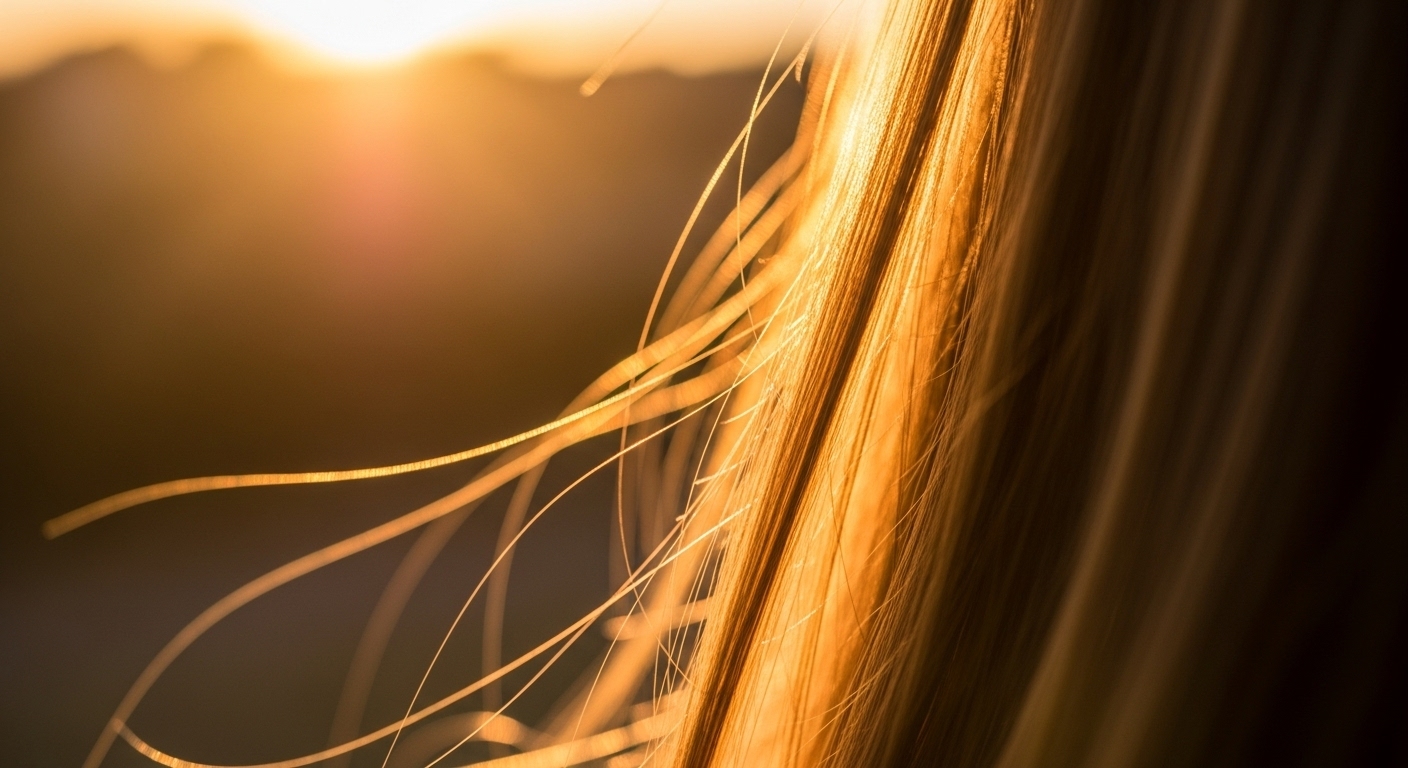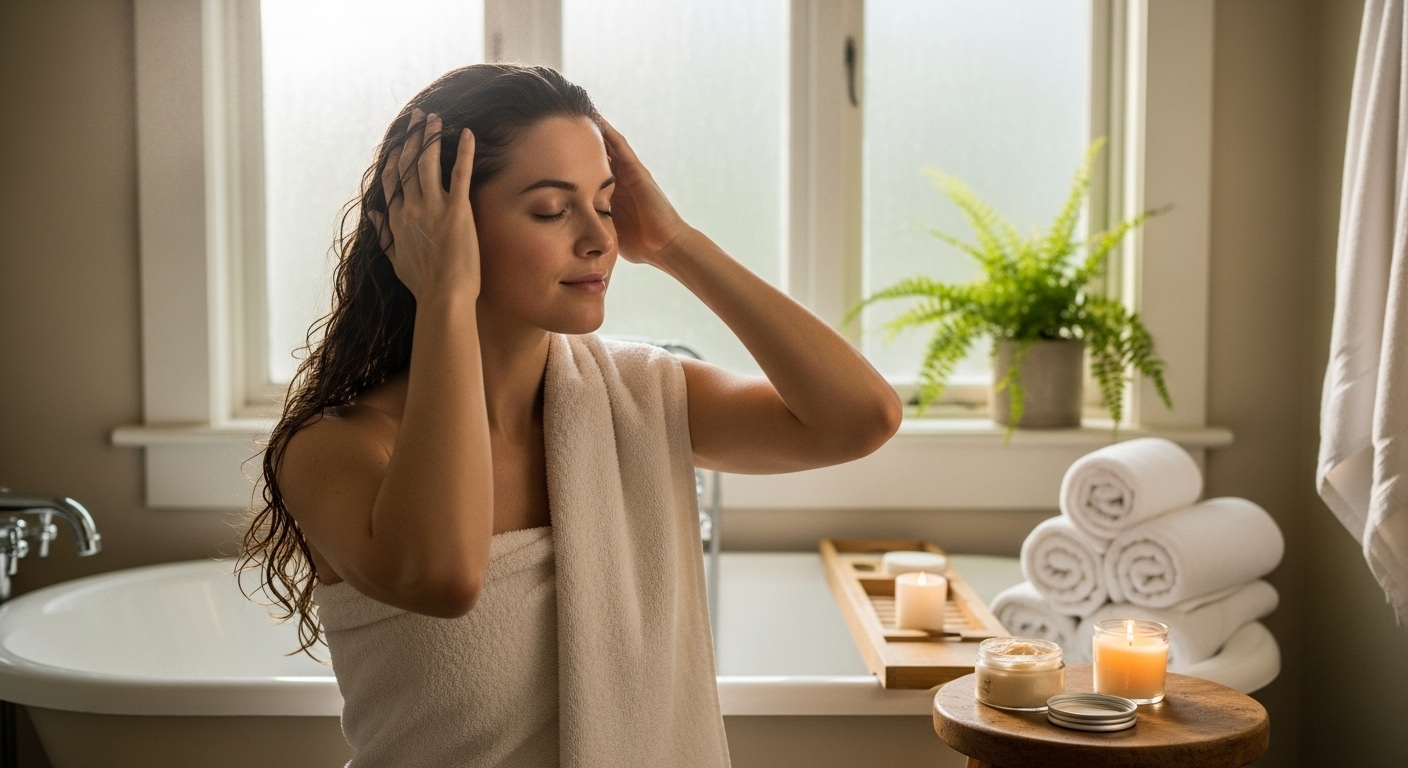
Essential Haircare Tips for Healthy, Beautiful Hair
Beautiful, healthy hair doesn't happen by accident—it's the result of consistent care, proper techniques, and understanding your hair's unique needs. Whether you're dealing with damage, dryness, or simply want to maintain your hair's natural luster, this comprehensive guide covers everything you need to know about hair care.
Understanding Your Hair Type
Before diving into care routines, it's essential to identify your hair type. Hair is generally categorized by texture (straight, wavy, curly, coily) and density (fine, medium, thick). Each type has specific needs and responds differently to products and techniques.
Hair Texture Types
Type 1 (Straight): Lies flat, tends to be oily, shows damage easily
Type 2 (Wavy): S-shaped pattern, prone to frizz, versatile styling
Type 3 (Curly): Spiral curls, prone to dryness, needs moisture
Type 4 (Coily/Kinky): Tight coils, very dry, requires intensive moisture
The Perfect Hair Washing Routine
How Often Should You Wash?
There's no one-size-fits-all answer. Fine, straight hair may need washing daily or every other day, while thick, curly, or textured hair benefits from washing just once or twice weekly. Listen to your hair—if it feels greasy, wash it. If it feels dry, wait longer between washes.
Proper Washing Technique
Step 1: Wet hair thoroughly with lukewarm water. Hot water strips natural oils and causes frizz.
Step 2: Apply shampoo to your scalp only. Use fingertips (not nails) to massage in circular motions for 1-2 minutes. This stimulates circulation and thoroughly cleanses.
Step 3: Rinse completely. Leftover product causes buildup and dullness.
Step 4: Apply conditioner from mid-lengths to ends. Avoid roots unless you have very dry hair. Leave on for 2-3 minutes minimum.
Step 5: Rinse with cool water to seal the cuticle and add shine.
Choosing the Right Shampoo and Conditioner
For Fine Hair: Volumizing formulas, lightweight conditioners, avoid heavy oils
For Thick Hair: Moisturizing shampoos, rich conditioners, smoothing formulas
For Curly Hair: Sulfate-free cleansers, deep conditioning treatments, leave-in products
For Colored Hair: Color-safe formulas, purple shampoo for blondes, sulfate-free options
For Damaged Hair: Repair formulas with proteins, bond-building treatments, gentle cleansers
Deep Conditioning and Hair Masks
Regular deep conditioning is crucial for maintaining healthy hair, especially if you use heat styling or color treatments. Apply a hair mask once weekly, focusing on ends and damaged areas. Leave on for 10-30 minutes, or overnight for extremely dry hair. Consider:
Protein Treatments: Strengthen damaged hair, repair bonds, prevent breakage. Use every 4-6 weeks.
Moisture Masks: Hydrate dry hair, improve elasticity, add shine. Use weekly or as needed.
Clarifying Treatments: Remove buildup, refresh scalp, restore volume. Use monthly.
Heat Styling Protection
Heat is one of the main causes of hair damage. If you must use heat tools, follow these rules:
Always use heat protectant: Apply to damp hair before blow-drying or dry hair before flat ironing/curling. This creates a barrier that minimizes damage.
Lower the temperature: Fine hair: 250-300°F, Medium hair: 300-350°F, Thick/coarse hair: 350-400°F. Never exceed 400°F.
Dry hair first: Never flat iron or curl wet or damp hair. This causes severe damage as water in the hair shaft boils.
Take breaks: Give your hair heat-free days. Embrace air-drying and heatless styling methods several times weekly.
Damage Prevention Strategies
Gentle Detangling
Always detangle hair when it's wet and conditioned, starting from the ends and working up to roots. Use a wide-tooth comb or wet brush designed for detangling. Never brush wet hair with a regular brush—this causes breakage.

Protective Hairstyles
Minimize manipulation and friction by wearing protective styles like braids, buns, or twists. Sleep on a silk or satin pillowcase to reduce friction and prevent breakage. For longer hair, loosely braid before bed.
Trim Regularly
Get trims every 8-12 weeks to remove split ends before they travel up the hair shaft. Even if you're growing your hair, regular trims keep it healthy and actually help it grow faster by preventing breakage.
Minimize Chemical Treatments
Space out color services, perms, and relaxers as much as possible. If you must color, opt for balayage or highlights rather than all-over color, which causes less damage. Always use professional services for chemical treatments rather than DIY kits.
Scalp Care: The Foundation of Healthy Hair
Healthy hair starts with a healthy scalp. Your scalp is skin and needs care just like your face:
Massage regularly: Spend 2-3 minutes massaging your scalp daily to stimulate blood flow and promote growth.
Exfoliate monthly: Use a scalp scrub or clarifying treatment to remove buildup and dead skin cells.
Treat conditions promptly: Address dandruff, itchiness, or excessive oiliness with appropriate treatments.
Protect from sun: Wear a hat or use hair products with UV protection when spending extended time outdoors.
Nutrition for Healthy Hair
Beautiful hair starts from within. These nutrients are essential for hair health:
Protein: Hair is made of protein (keratin). Eat lean meats, fish, eggs, legumes, and nuts.
Biotin: Found in eggs, nuts, and sweet potatoes. Supports hair growth and strength.
Omega-3 Fatty Acids: From fish, flaxseed, and walnuts. Nourish hair follicles and promote shine.
Iron: Deficiency causes hair loss. Get it from red meat, spinach, and lentils.
Vitamin E: Protects hair from oxidative stress. Found in nuts, seeds, and avocados.
Water: Hydration is crucial. Aim for 8 glasses daily for healthy, hydrated hair.
Special Care for Color-Treated Hair
Colored hair requires extra TLC to maintain vibrancy and health:
Wait 48 hours after coloring to wash: This allows color to fully set.
Use color-safe products: Sulfate-free formulas prevent premature fading.
Cool water rinses: Hot water opens the cuticle and releases color molecules.
Purple shampoo for blondes: Neutralizes brass and keeps cool tones fresh.
UV protection: Sun fades color quickly. Use products with UV filters.
Deep condition weekly: Color processes dry out hair. Intensive moisture is essential.
Seasonal Hair Care Adjustments
Summer
UV protection is crucial. Chlorine and salt water are damaging—rinse immediately after swimming and apply a clarifying treatment weekly. Use leave-in conditioners for extra protection. Embrace air-drying to give hair a break from heat.
Winter
Combat dryness with intensive moisture treatments. Wear a hat to protect from cold and wind (but ensure it's lined with silk or satin to prevent friction). Use a humidifier indoors to combat dry indoor heating. Avoid washing too frequently as this strips natural oils when hair is already dry.
Common Hair Problems and Solutions
Frizz
Causes: Dryness, humidity, damage, rough handling
Solutions: Deep condition regularly, use smoothing serums, avoid towel-drying roughly, use microfiber towels or t-shirts instead, apply anti-frizz products to damp hair, sleep on silk pillowcases
Hair Loss/Thinning
Causes: Stress, hormones, nutritional deficiencies, aging, medical conditions
Solutions: Consult a doctor to rule out medical issues, ensure adequate protein and iron intake, use volumizing products, try caffeine-based treatments, massage scalp daily, consider minoxidil if appropriate
Oily Scalp
Causes: Genetics, hormones, over-washing, using wrong products
Solutions: Use clarifying shampoo weekly, avoid conditioning roots, don't touch hair throughout the day, use dry shampoo between washes, rinse thoroughly to remove all product
Dry, Brittle Hair
Causes: Over-processing, heat damage, environmental exposure, lack of moisture
Solutions: Deep condition weekly, use leave-in treatments, minimize heat styling, trim damaged ends, use hair oils on ends, protect from sun and chlorine
Split Ends
Causes: Mechanical damage, heat styling, chemical treatments, lack of trims
Solutions: Get regular trims, use split-end mending products temporarily, apply oil to ends daily, avoid excessive brushing, protect hair during sleep
DIY Hair Treatments
Coconut Oil Mask: Apply warm coconut oil from roots to ends, leave on for 30 minutes to overnight, shampoo twice to remove. Great for deep moisture.
Apple Cider Vinegar Rinse: Mix 1 part ACV with 3 parts water, apply after shampooing, leave for 1-2 minutes, rinse. Removes buildup and adds shine.
Egg Protein Treatment: Beat 1-2 eggs, apply to damp hair, leave 20 minutes, rinse with cool water (not hot or it will cook!). Strengthens and repairs.
Aloe Vera Scalp Soother: Apply fresh aloe vera gel directly to scalp, massage in, leave 30 minutes, rinse. Soothes irritation and promotes growth.
Conclusion
Healthy, beautiful hair is achievable for everyone with the right knowledge and consistent care. Remember that hair health is a journey, not a destination. Changes won't happen overnight, but with patience and proper care, you'll see significant improvements in your hair's texture, shine, and overall health.

Listen to your hair's needs, adjust your routine seasonally, and don't be afraid to experiment to find what works best for your unique hair type. Invest in quality products where it matters, protect your hair from damage, and nourish it from both the inside and outside. Your hair is your crown—wear it with confidence!